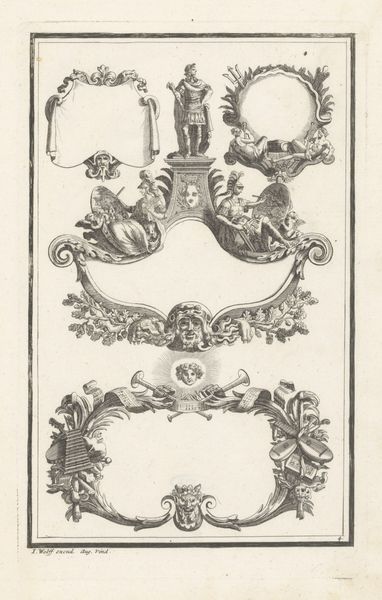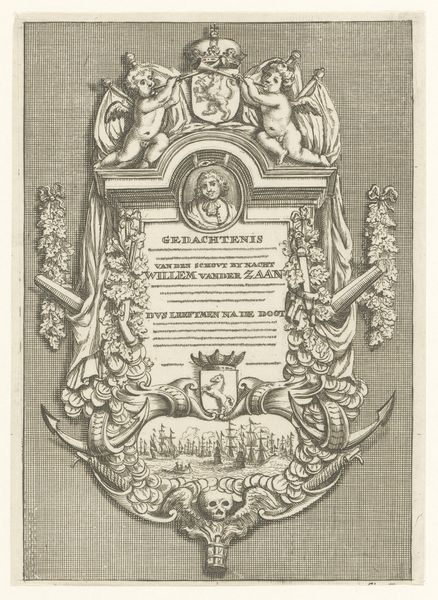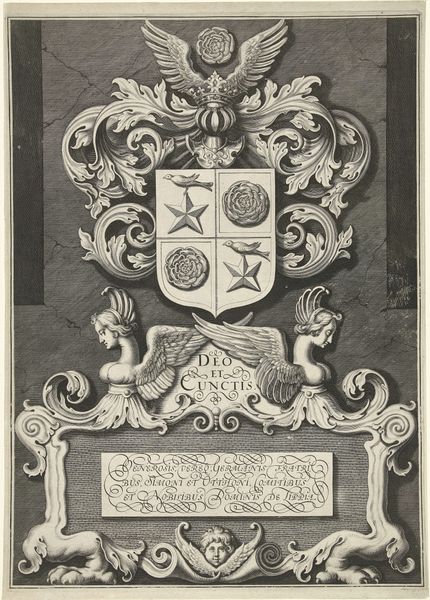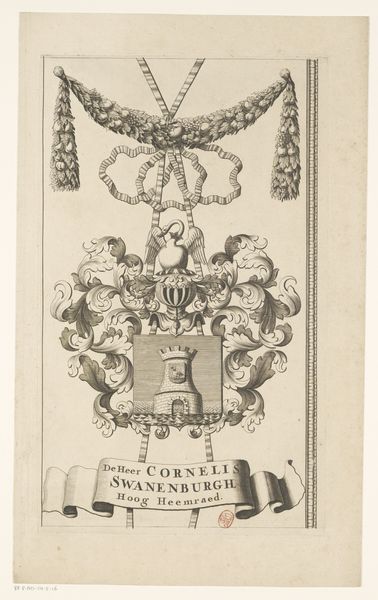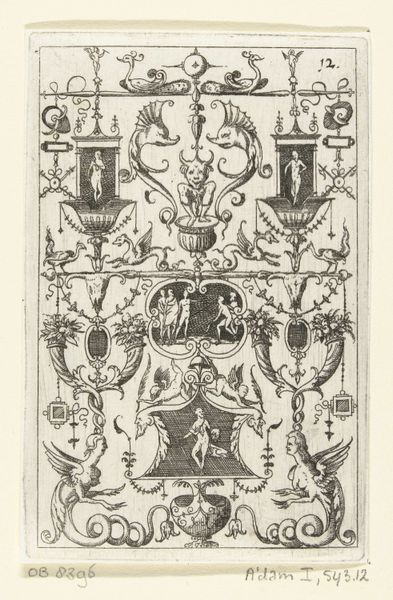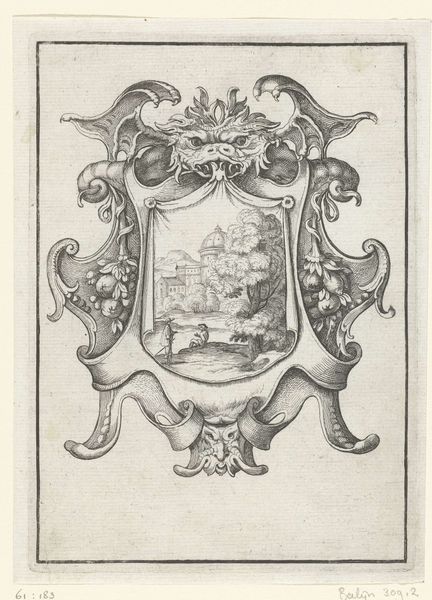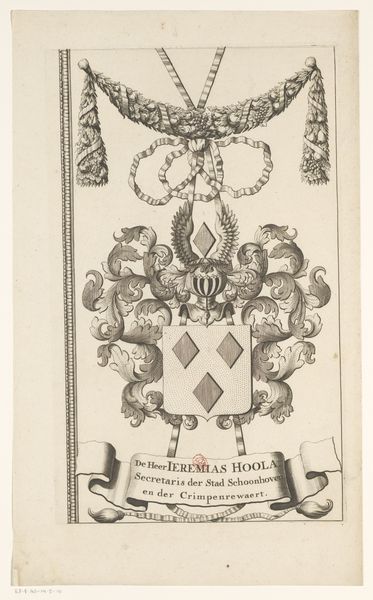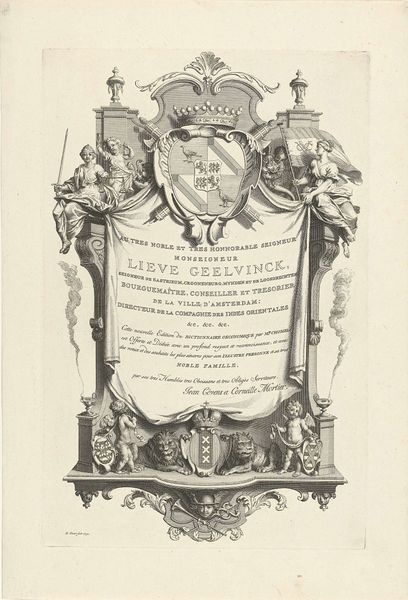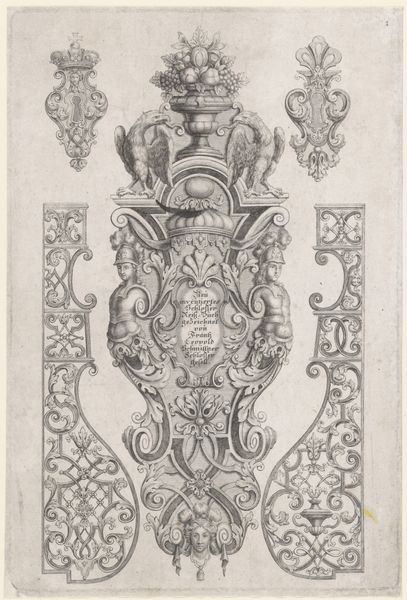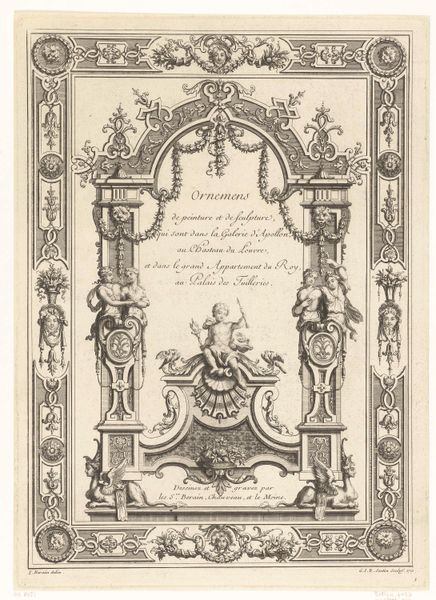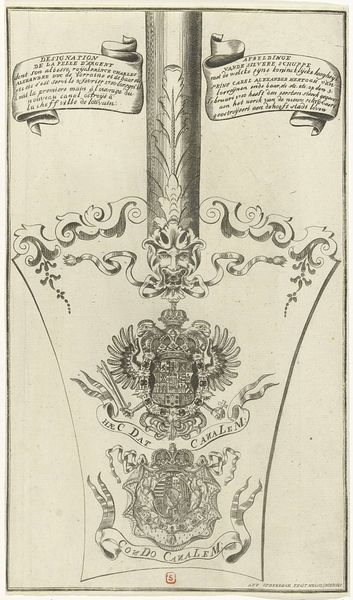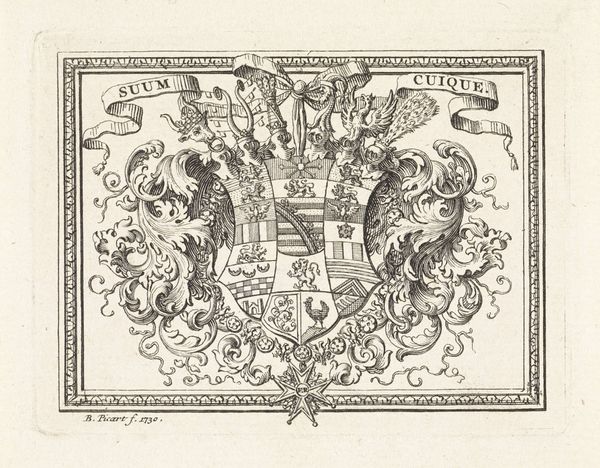
Linker wapenrand van een kaart van het Hoogheemraadschap van Schieland (onderste deel) 1660
0:00
0:00
drawing, print, ink, pen
#
drawing
#
baroque
#
pen drawing
# print
#
pen illustration
#
pen sketch
#
ink
#
pen
#
history-painting
Dimensions: height 500 mm, width 300 mm
Copyright: Rijks Museum: Open Domain
Curator: This print, created around 1660, offers an intriguing glimpse into Dutch Golden Age cartography and heraldry. It’s titled "Linker wapenrand van een kaart van het Hoogheemraadschap van Schieland (onderste deel)," and was designed by Johannes Vinckboons. Editor: Right, a title as descriptive as it is long! My immediate feeling is one of contained power—all those swirling ribbons and the bold, fractured sword. There's a theatrical almost baroque sensibility at play, isn’t there? Curator: Indeed. The medium itself, pen and ink on paper, suggests a readily reproducible design, hinting at the social context in which maps weren't just geographic tools, but objects imbued with political and social weight. The meticulous details of the scrollwork and the coat of arms speak to a high level of craftsmanship and a patron willing to invest in conveying authority and prestige through this document. Editor: Precisely! It's that marriage of the practical—a map for governing—with this flamboyant ornamentation that really grabs me. The broken sword on the coat of arms – does it signify something specific, perhaps a previous conflict or a symbolic assertion of power? It gives me the impression of conflict contained within decoration. Curator: That’s a keen observation. Broken swords often represent defeat, the end of a conflict, or sometimes justice. It would be important to consider who the map was commissioned for to discern more of its significance. The elaborate helmet and mantling further contribute to this expression of power. One wonders about the labor involved, the skill of the artisan replicating the original design onto printed copies. Editor: Absolutely. There's a real tension between the act of careful creation with these inks and the statement it embodies. Knowing this was potentially mass-produced shifts its significance for me; what was the reach, who saw it, who owned it? Like whispers through time about power and place, now faded, almost forgotten... Curator: These are insightful considerations. Seeing the layers of materiality and the social contexts gives another important perspective to understanding the work. Editor: It definitely helps unlock the hidden narratives humming just beneath the surface of ink and paper.
Comments
No comments
Be the first to comment and join the conversation on the ultimate creative platform.
